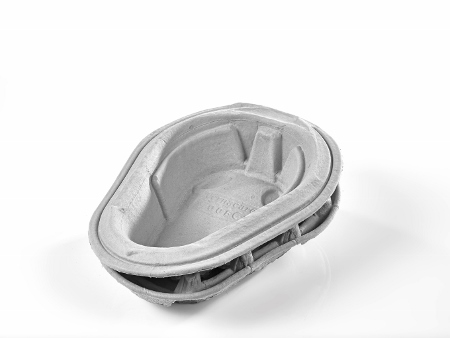Hospitals generate a lot of waste, from packaging and food leftovers, to clinical and patient waste.
The management of offensive waste – that containing body fluids, secretions or excretions – is key to infection prevention and control within healthcare settings.
There are a number of different toileting aids and human waste management solutions and systems available for use with immobile patients in healthcare environments, mostly based on the first macerating machine which was first installed into a hospital in 1954.
They include:
- Reusable plastic/metal bedpans and implements that are manually cleaned using unvalidated methods and without testing of efficacy
- Reusable plastic/metal bedpans and implements that are cleaned in local washer disinfectors
- Single-use bedpans and implements that are processed in disposal units
Other, more-invasive, solutions include urinary catheterisation, which is the insertion of a tube to drain the patient’s bladder of urine. However, such a procedure introduces the risk of catheter-acquired urinary tract infection.
Eliminating the need to share and reuse bedpans is the biggest advantage of adopting the single-use system approach
Charged with significantly reducing the prevalence of healthcare acquired infections, hospitals are increasingly turning to single-use systems. These usually comprise a disposal unit and single-use paper-based utensils and they effectively eliminate the need to share and reuse bedpans and other products. Vernacare has developed a white paper that looks at the effect of these modern systems on a number of key areas.
Better to be single
The document – Toileting Aids In Hospitals: Reuse or Dispose? – states that, from an engineering standpoint, the time spent maintaining single-use units is half that required to maintain washer disinfectors. When all costs are considered, the paper states that a single-use system can be up to 39.4% cheaper than the alternatives, making them increasingly attractive to healthcare operators.
The paper adds: “Eliminating the need to share and reuse bedpans is the biggest advantage of adopting the single-use system approach.
“This leads to improved labour productivity, reduced utilities consumption, better patient satisfaction and reduced risk of hospital acquired infection.”
It claims a third of nursing hours can be saved across a year and cleaning tasks attributed to housekeeping hours can free up almost 8,500 hours. In addition, water consumption can be reduced by up to 50% and the power required can be almost 100% less than that required for traditional bedpan sanitisers.
Vernacare has launched a number of these single-use products aimed specifically at hospital environments, with much of its research and development carried out with the help of NHS trusts.
Kent said: “It’s absolutely vital to collaborate with hospitals so that as manufacturers we can better understand the problems and then work together to solve them.”
It’s absolutely vital to collaborate with hospitals so that as manufacturers we can better understand the problems and then work together to solve them
An example of this is Vernacare’s work with Lancashire Teaching Hospitals NHS Foundation Trust.
The company worked with the trust’s Centre for Health Research to develop the VernaFem disposable female urinal.
The eco-friendly product empowers patients to go to the toilet with little or no assistance from healthcare staff, helping to increase dignity, confidence and self esteem. As a single-use pulp product, it also helps to tackle the spiralling cost of healthcare acquired infections.
This is just one example of how the solutions are evolving to meet modern demands.

VernaFem was created alongside Lancashire Teaching Hospitals NHS Foundation Trust
Working together
Other recent changes have included creating hands-free macerators so staff do not have to touch the unit to drop bedpans or other products in. This is either controlled by infrared sensors of foot pedals.
“Another issue we have been asked to look at was the surrounds for the bedpans,” said Kent. “Often they are plastic and the disposable bowl then goes inside. Obviously this creates an additional infection risk and means you have to clean this. We have come up with a disposable alternative.”
Over the coming years she said she expects further evolution of current solutions.
“We are starting to introduce auto start functions in some hospitals and dial-in capability so that, if there is a problem with any of the machinery, you can see exactly what the problem is and fix it immediately without having to send someone out.”
But she is calling on building managers and architects to provide help.
She said: “In the UK there are lots of older hospital buildings and we need to look at the design of sluice rooms so they are in the best-possible place, both for ease of access and to reduce infections. We need to sit down with architects and project teams and re-evaluate the whole process to make it as effective and as efficient at possible.”

Vernacare works with hospitals to highlight areas for improvement, including designing a new disposable bedpan support




